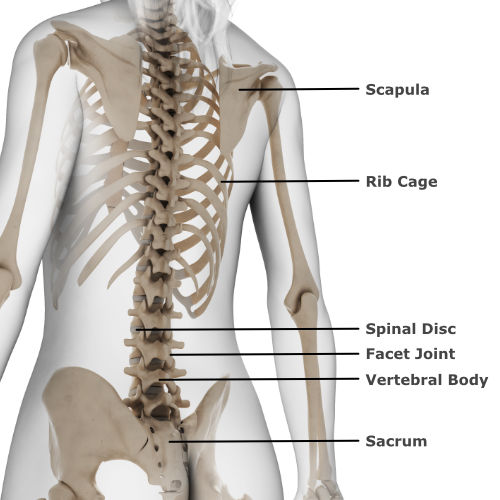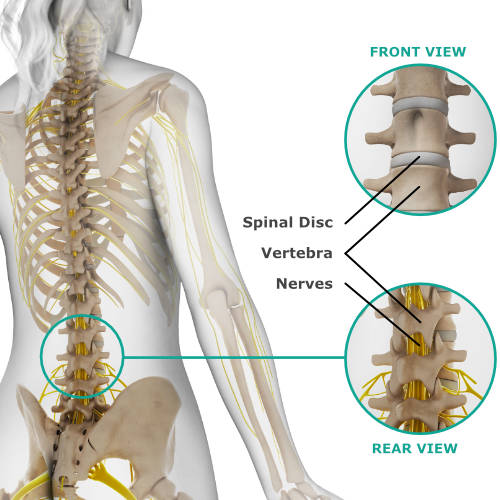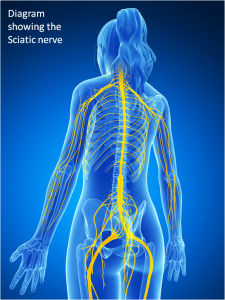500+ Google Reviews
★★★★★ 4.9/5
4.9 out of 5
The best physios by far...
Truly outstanding experience...
...very friendly and welcoming.
...tons of experience.
...they have been amazing.
The exact cause of mid and upper back pain can be difficult to diagnose. It’s often due to stiffness and weakness in the area and sedentary lifestyles. Our expert Physios have years of experience in treating back pain and can help get you back to fitness.
The spine is a strong and uniquely evolved structure which provides support and protection whilst at the same time allowing for adequate flexibility and movement. The anatomy of the spine is made up of a number important structures including the:
The discs in of the low back are strong structures made out of a tissue called collagen that has a ‘gel-like’ centre. The anatomy of the disc means it is very well suited to absorbing loads and can act as a shock absorber due to the strength of tissues. However, the collagen and gel like centre permit movement allowing the spine to move in a healthy manner. In fact movement is important as it keeps the disc healthy and strong!



Two facet joints on either side provide support and articulation between two vertebrae, which along with the discs allow us to move the spine when bending or turning. Like all joints regular movement will keep them healthy.
There are a strong array of intertwined ligaments, connective tissue and muscles which provide stability, strength and support to the spine. At the same time these tissues also have elastic and contractile properties to allow for flexibility and movement.
The spinal cord is protected by the vertebrae, discs, ligaments and muscles of the spine. The spinal cord itself divides to form the nerves which pass into the leg and pelvic region. The sciatic nerve is the main nerve which passes down the back of the leg supplying the hamstrings and calf muscles.
Upper and Middle Back Pain are common. Symptoms are often due to stiffness and weakness in the area and also sedentary lifestyles. Fortunately, the majority of symptoms will recover within 2-3 months, however it is extremely important to get the right advice and treatment.
It may not always be possible to tell which specific structure has been injured even with investigation, but the most important thing is that many structures will recover in a similar manner! The body has an amazing ability to heal and the therapist will be able to guide you to help optimise recovery. Acute or sub-acute symptoms are those experienced by patients for six weeks or less, to more chronic in duration which may be three months or more.
Both acute and chronic symptoms of mechanical upper and middle back pain should respond well with the right advice, treatment and exercise. So whether you’ve been experiencing symptoms for only couple of days or over a long period, it would be wise to seek advice.
Thoracic back pain describes pain located in the middle section of your back and the area around your shoulder blades. It is common, especially in women and adolescents.
Symptoms can be very variable from one person to another and either associated with or without a specific injury. Pain can be sharp or achy in nature and felt either intermittently or constantly. Particular movement can aggravate it, such as being in a static position for a long period of time. Pain usually arises from the muscles or joints around the thoracic spine and rib cage, though in some cases it can be due to a more complex medical problem (but this is relatively rare).
Thoracic back pain often settles on its own with relative rest and pain relief. A physiotherapist can assess your pain and provide recommendations on improving it and preventing recurrence. This often involves exercise therapy and can also involve hands on treatment.
In rare cases, thoracic spine pain may need prompt advice from either a Physio or GP, regarding onward investigations such as blood tests or scans. An array of scenarios would indicate this including recent trauma (such as a fall) or having any of the following symptoms: Osteoporosis, a history of Cancer, recent treatment for a bacterial infection, long term steroid use, feeling generally unwell, experiencing night sweats/chills, night pain or radiating pain to the arms or legs with pins and needles or numbness.
We are ultimately here to care for you and to help you get better. One of our experienced physiotherapists will be there to guide you through your therapy with the aim of getting you back to full fitness as quickly as possible.
Most initial sessions will involve:
As well as giving specific advice, your therapist has an array of treatment techniques which they may use to assist you including:
Your therapist has an array of treatment techniques at his disposal to help assist you along that road to recovery. The aim is to help reduce any stiffness or rigidity and to improve the fluidity in how you move – getting you back doing the stuff that you want to do!
However, the therapist at some stage will definitely use the most powerful weapon at his disposal which is…. Exercise! A sedentary office working life can cause a whole host of postural related ailments but through exercise your symptoms should hopefully start to resolve. In contrast someone who is very active could develop sports related low back pain. Therefore it is essential that any exercises are tailored to the individual’s needs and are appropriate for the stage of healing or recovery. They may involve just simple movement exercises or stretches to a full-on conditioning program for the trunk and back.
Throughout this process you will hopefully learn about your body and how to manage it, to know what postures and exercises are most comfortable and ultimately how to help prevent further problems occurring.
We also pride ourselves for the strong relationships that we have developed with a range of consultants throughout London. So rest assured that, should the need ever arise, we will ensure that you’re seen by the most appropriate specialist for your condition.
We usually call you back within the hour during normal working hours
We usually respond within the hour during normal working hours